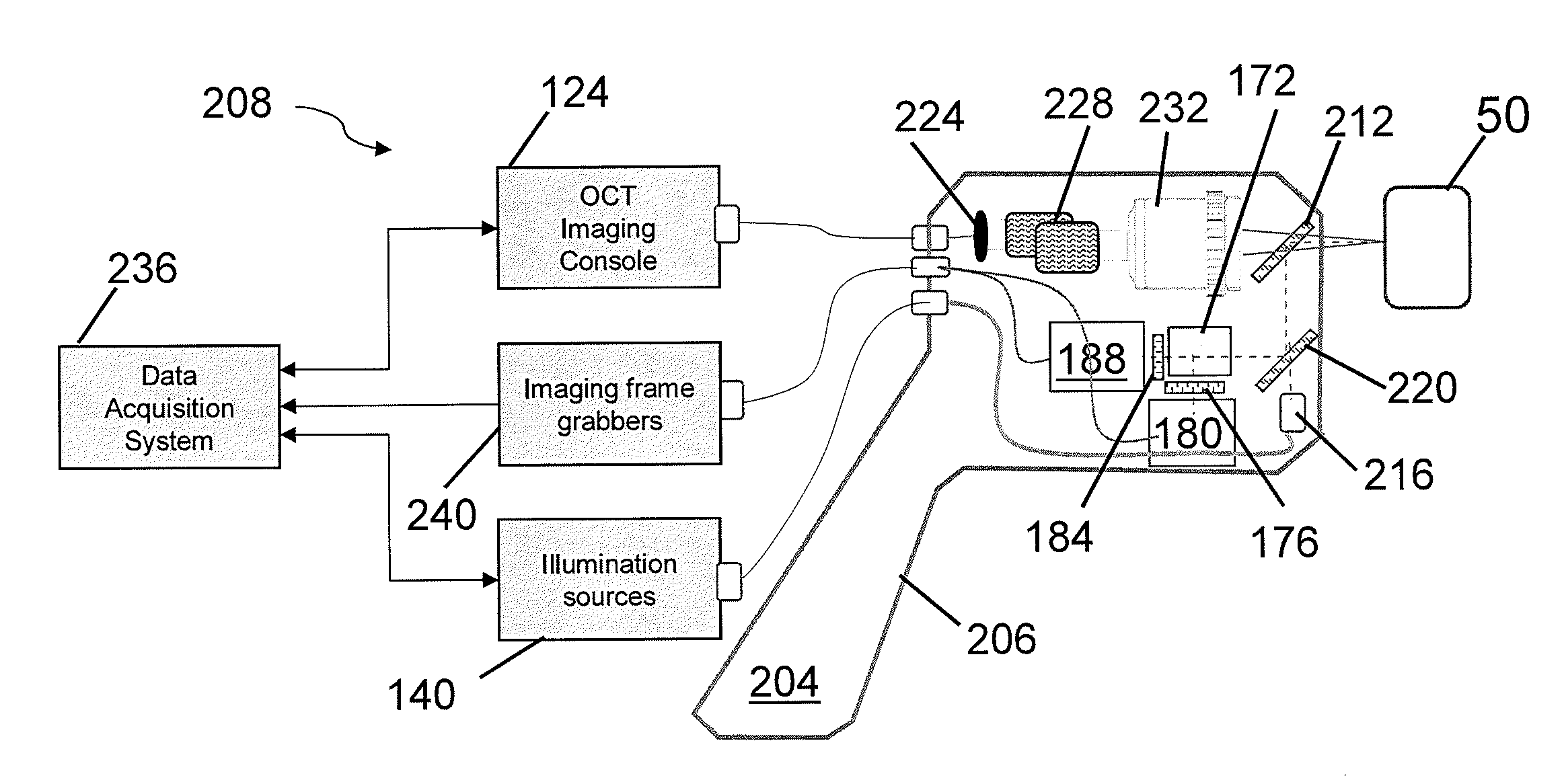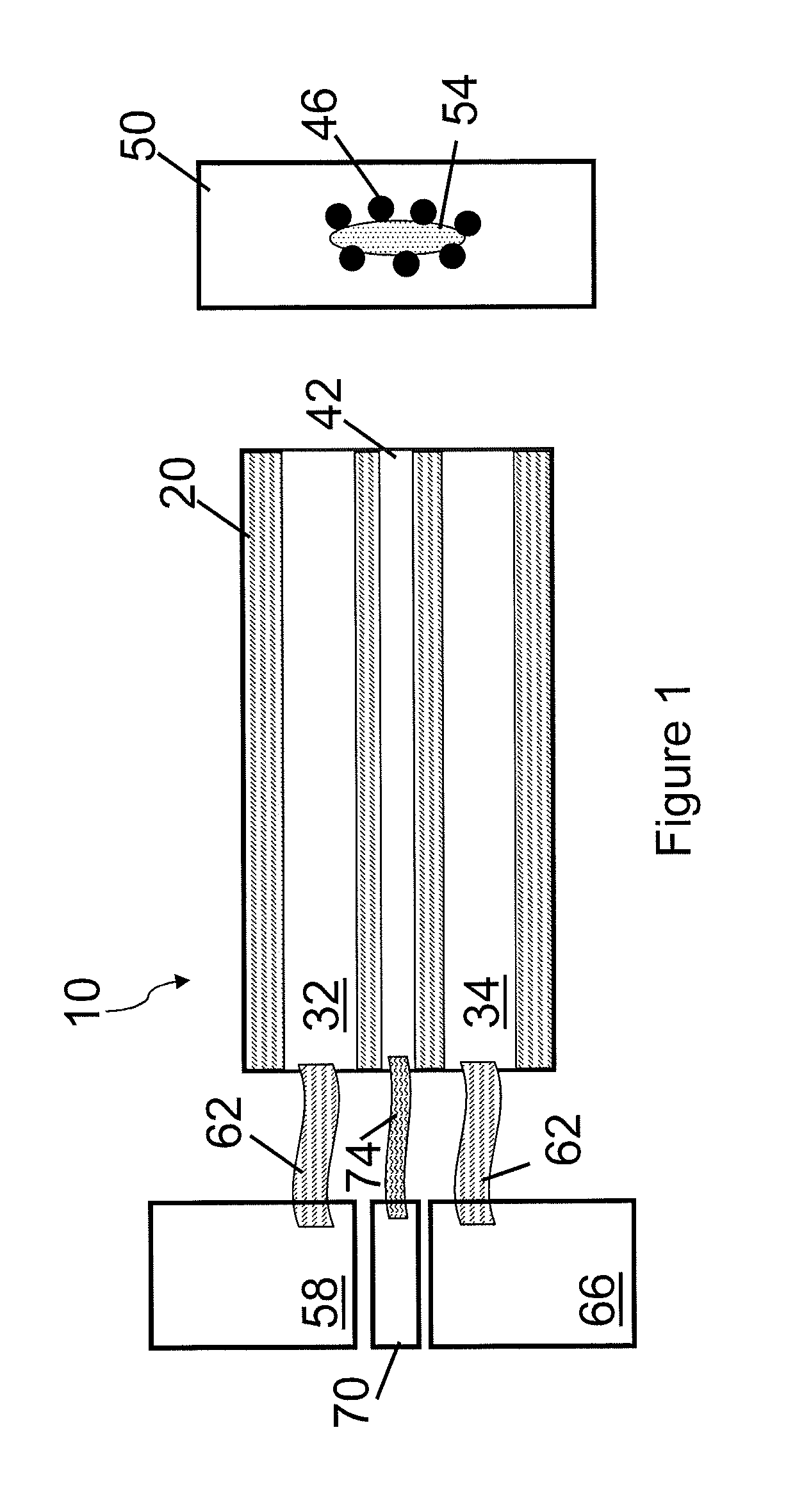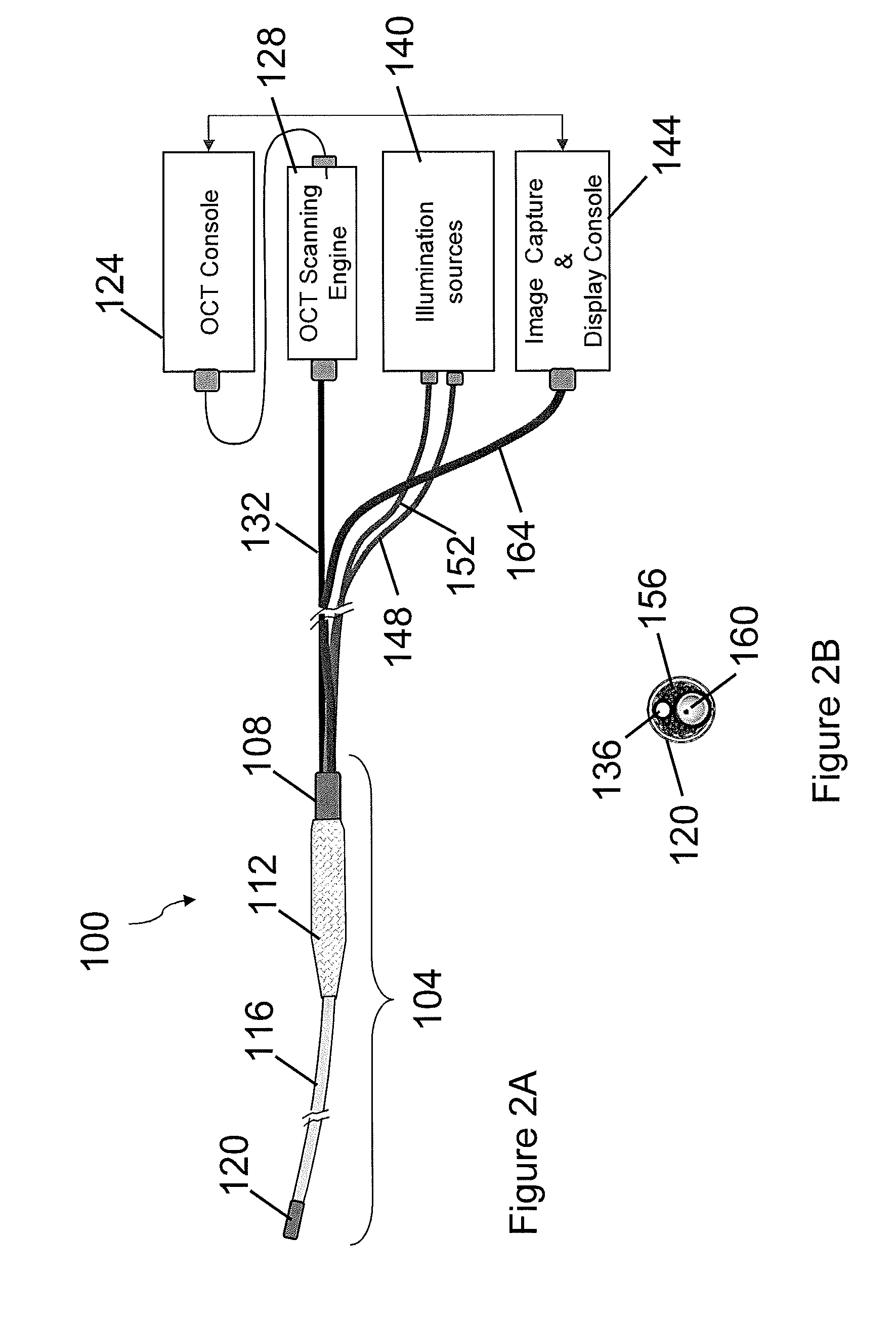Multi-Modal Imaging for Diagnosis of Early Stage Epithelial Cancers
a multi-modal imaging and early stage technology, applied in the direction of diagnostic recording/measuring, catheters, applications, etc., can solve the problems of not being able to perform large organ scanning, substantially etc., and achieve the effect of increasing the length of the procedur
- Summary
- Abstract
- Description
- Claims
- Application Information
AI Technical Summary
Benefits of technology
Problems solved by technology
Method used
Image
Examples
Embodiment Construction
[0028]FIG. 1 shows an exemplary probe 10 including a body 20 defining a first channel 32 for fluorescence imaging and a second channel 34 for OCT imaging. The first channel 32 can be used for bright field imaging, or a separate channel can be used for bright field imaging. The endoscopic probe 10 can define a third channel 42 used for delivery of a cancer targeting agent 46, such as the RGD-functionalized Au-PCL microparticles or nanoparticles, to tissue 50. The cancer targeting agent 46 can stain the tissue 50 containing a potentially cancerous lesion 54. Fluorescence imaging is used to identify the potentially cancerous lesion, and OCT imaging of the potentially cancerous lesion is used for cancer diagnosis. The endoscopic probe 10 need not include the third channel 42. In certain embodiments, the cancer targeting agent 46 can be introduced through alternative means, such as direct delivery or by a catheter.
[0029]The first channel 32 can be coupled to a fluorescence imaging system...
PUM
| Property | Measurement | Unit |
|---|---|---|
| diameter | aaaaa | aaaaa |
| diameter | aaaaa | aaaaa |
| volume | aaaaa | aaaaa |
Abstract
Description
Claims
Application Information
 Login to View More
Login to View More - R&D
- Intellectual Property
- Life Sciences
- Materials
- Tech Scout
- Unparalleled Data Quality
- Higher Quality Content
- 60% Fewer Hallucinations
Browse by: Latest US Patents, China's latest patents, Technical Efficacy Thesaurus, Application Domain, Technology Topic, Popular Technical Reports.
© 2025 PatSnap. All rights reserved.Legal|Privacy policy|Modern Slavery Act Transparency Statement|Sitemap|About US| Contact US: help@patsnap.com



